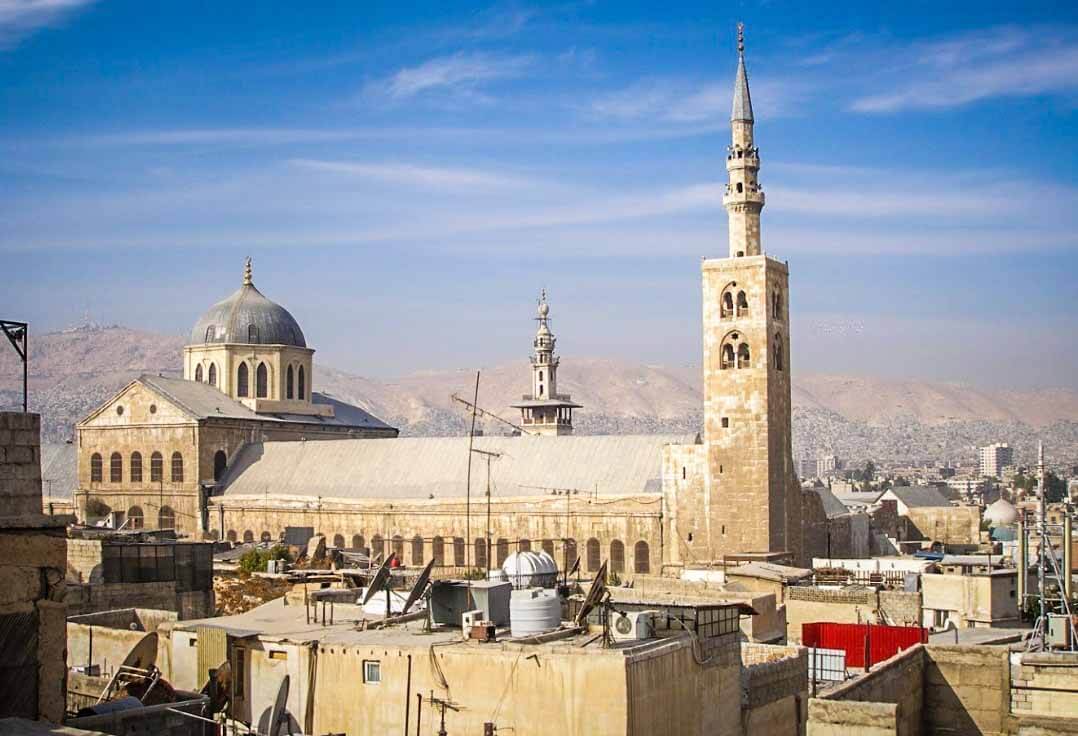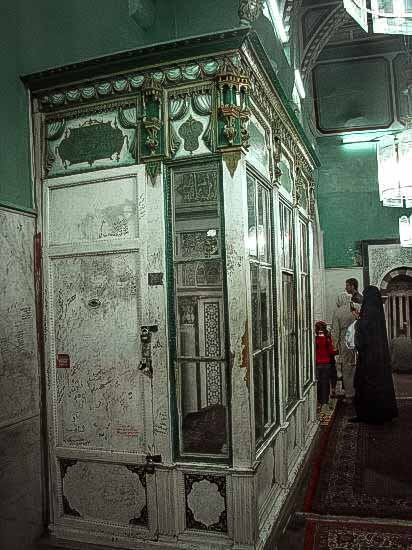Damascus, Syria
Coordinates: 33.511900, 36.306700
The Minaret of Minaret of Hz. Isa عليه اسلام is the mosque’s tallest minaret
It is located on the southeast corner of the mosque complex, is around 77 meters (253 ft) in height and the tallest of the three minarets.
Islamic belief holds that Hz. Isa عليه اسلام will descend from heaven physically before the Day of Judgement to confront the Al Masih ad-Dajjal and will kill him in Lod.
According to local Damascene tradition, relating from Hadith of Hz. Prophet Muhammad ﷺ about the Qiyamah, he will reach earth via the Minaret of Hz. Isa عليه اسلام , hence its name.
Ibn Kathir, a prominent 14th-century Muslim scholar, backed this notion.
It is believed that he will descend on a Jamaat (group) that will be righteous at the time and comprising of 800 men and 400 women.
The people will be preparing for war at the time against Dajjal. It will be time for Fajr prayers, and Imam Mahdi عليه اسلام will be the Amir (leader) of the Muslims.
The tradition of Hz. Isa ibn Maryam’s عليه اسلام descending from heavens is found in a number of Ahadith, and some even mention “the minaret” as well.
According to abi Dawud (Hadith 4321), Prophet Muhammad ﷺ said that Hz. Isa ibn Maryam عليه اسلام will descend from heavens towards the white minaret east of Damascus.
Another Hadith from Ibn Majjah relates the same account of Hz. Isa ibn Maryam’s عليه اسلام descent on a white minaret east of Damascus.
Construction
Some sources claim it was originally built by the Abbasids in the 9th century, while other sources attribute the original structure to the Umayyads.
The main body of the current minaret was built by the Ayyubids in 1247, but the upper section was constructed by the Ottomans.
The main body of the minaret is square-shaped and the spire is octagonal.
It tapers to a point and is surmounted by a crescent (as are the other two minarets.)












